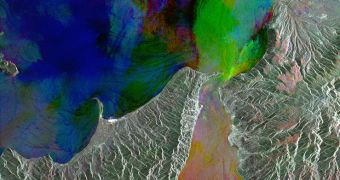The famous ERS-2 satellite that the European Space Agency (ESA) recently decommissioned is continuing its descent in Earth's orbit. The maneuvers are being performed in order to ensure that the spacecraft will not become a navigational hazard.
This spacecraft has served ESA for many years, but now that it is retired, it is quickly becoming an orbital liability. This means that there is a large risk it will be slammed by other satellites, or large pieces of space debris.
A collision between an active American satellites and a retired Russian one, back in 2009, showed just how devastating the effects of such a collision can be. As such, experts handling satellites in general now take great care to ensure the safety of their respective vehicles.
By the end of August, ESA plans to have the ERS-2 lowered to a safer, less-populated orbit, where it will not pose any type of danger to working satellites. ESA is moving quickly in its effort, because the chances of collision are still high at this point.
The European Remote Sensing (ERS) satellite was decommissioned on July 6, after more than 16 years of orbital activity. With ERS-1 and ERS-2, ESA moved to the forefront of Earth observation, which was then a relatively young field of research.
When they launched, the ERS satellites were all the rage in technology and orbital performances. Both had an identical suite of instruments. The sole difference was the ozone-monitoring device that ERS-2 had added to its capabilities.
Between themselves, the satellites provided ESA with 20 years-worth of continuous data. ERS-1 lasted only until 2000, when an error caused it to shut down unexpectedly. Its twin is now being retired in order to avoid it meeting a similar end.
Moving the satellite is coordinated from the European Space Operations Center (ESOC), in Germany. The first stage of the process was ordering the spacecraft to fire its engines for about 300 seconds a few days ago.
“We achieved our first 700[-kilometer] target altitude on 27 July. Between now and the end of August, ERS-2 will be brought down to about 570 km, where the risk of collision with other satellites or space debris is drastically reduced,” ERS-2 operations manager Frank Diekmann explains.
The ESA ground station in Kourou, French Guiana, and the Malindi station, in Kenya, are closely monitoring the progress of ERS-2 maneuvers.

 14 DAY TRIAL //
14 DAY TRIAL //